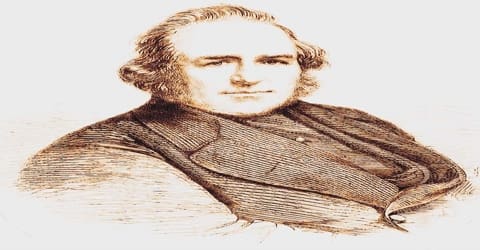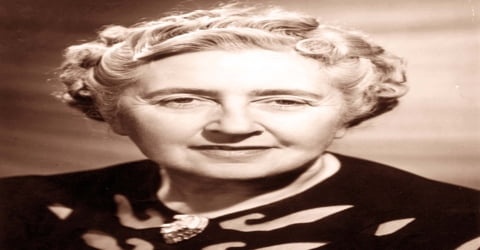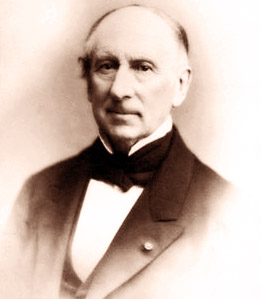Biography of Joseph Paxton
Joseph Paxton- English gardener, architect and Member of Parliament.
Name: Sir Joseph Paxton
Date of Birth: 3 August 1803
Place of Birth: Bedfordshire, England
Date of Death: 8 June 1865 (aged 61)
Place of Death: Sydenham, London, England
Occupation: Architect
Spouse/Ex: Sarah Bown (m. 1827-1865)
Early Life
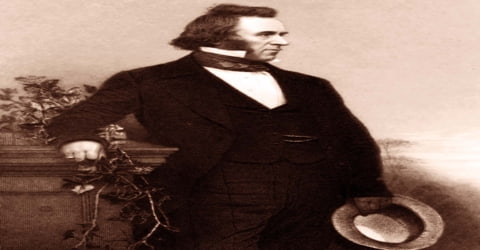
An English gardener of the 19th century who would go on to make some remarkable contributions to modern architecture, Joseph Paxton was born on 3rd August 1803, in Bedfordshire, England, to the seventh son of a farming family, in Milton Bryan, Bedfordshire. He was the architect of the Crystal Palace for the Great Exhibition of 1851 in London. Paxton’s designs defined the modernity and progress-focused England of the time, and would also shape ideas about construction around the world.
Born in England to a farming family, Joseph Paxton held a number of gardening jobs until he began working at Chiswick Gardens of the Horticultural Society, adjacent to the gardens of the Duke of Devonshire. Impressed with his abilities, the Duke appointed Paxton head gardener at Chatsworth House, the Devonshire family’s large country house in Derbyshire, where Paxton successfully went on to design gardens, fountains, a model village and an arboretum. He also married the Chatsworth housekeeper’s niece, Sarah Bown. His moment of glory arrived with the 1851 Great Exhibition where he delivered a splendid design for the main hall in Hyde Park named as ‘The Crystal Palace’. The novelty of his extraordinary plan was its revolutionary, modular, prefabricated design and the extensive use of glass. Built within six months by 2000 men, the hall was a huge success and subsequently, Paxton was knighted by Queen Victoria. Thereafter, while retaining his post as the head gardener at Chatsworth, Paxton also took up a number of other projects such as working on the layout of public parks and helped in creating various country houses. Subsequently, he became wealthy through successful speculation in the booming railway industry and served as a Member of Parliament until his death.
Childhood, Family and Educational Life

An English landscape gardener and designer of hothouses, Sir Joseph Paxton was born on 3rd August 1803, in Milton Bryan, Bedfordshire, in a farming family. He was the seventh son of a yeoman farmer. Some references, incorrectly, list his birth year as 1801. This is, as he admitted in later life, a result of misinformation he provided in his teens, which enabled him to enroll at Chiswick Gardens.
As a teenager, Paxton became a garden boy for a wealthy member of the aristocracy and eventually moved up into the position of the gardener of the Chiswick Gardens, a highly respected landscape in England. Paxton was, at the time, working for the Royal Horticultural Society, but his talents were soon recognized by another patron of the gardens, William Cavendish, Sixth Duke of Devonshire. Cavendish offered Paxton a job as head gardener at his country estate, Chatsworth, one of the most lauded gardens in England at that time. Paxton was a young adult at the time.
Personal Life
In 1827, Joseph Paxton married Sarah Bown, the Chatsworth housekeeper’s niece, whom he met on his first day of work at Chatsworth. They were together until Paxton’s death in 1865.
Paxton enjoyed a friendly relationship with his employer who recognized his diverse talents and facilitated his rise to prominence.
Career and Works
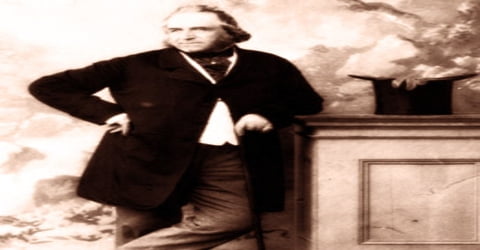
Joseph Paxton was superintendent of the gardens at Chatsworth, the duke’s Derbyshire estate from 1826; he built in iron and glass the famous conservatory there (1840) and the lily house for the duke’s rare Victoria regia (1850). Paxton developed an interest in greenhouses in 1832, at Chatsworth where he designed a series of buildings with “forcing frames” for espalier trees and for the cultivation of exotic plants such as highly prized pineapples. At the time the use of glasshouses was in its infancy and those at Chatsworth were dilapidated. After experimentation, he designed a glass house with a ridge and furrow roof that would be at right angles to the morning and evening sun and an ingenious frame design that would admit maximum light: the forerunner of the modern greenhouse.
Paxton distinguished himself with the ‘Great Stove’ conservatory at Chatsworth, built between 1836 and 1840, which was the largest glass building in the world at that time. Subsequently, he designed the biggest glass-house in Europe, made up entirely using sheet-glass. The curved ridge-and-furrow glazed timber roof was carried on arched laminated-timber frames supported on cast-iron columns and buttressed by the side arches over the flanking aisles.
The move to Chatsworth turned out to be a major moment for Paxton. His new employer was friendly and respected Paxton’s gift for horticulture, giving the young gardener a large amount of power over the coveted grounds of the estate. Paxton was tasked with many things, including redesigning the gardens, adding a rock garden, building fountains, and expanding the arboretum.
Joseph Paxton began the Great Conservatory, or Stove, a huge glasshouse, 227 ft (69 m) long and 123 ft (37 m) wide, in 1836. The columns and beams were made of cast iron and the arched elements of laminated wood. At the time, the conservatory was the largest glass building in the world. The largest sheet glass available at that time, made by Robert Chance, was 3 ft (0.91 m) long. Chance produced 4 ft (1.2 m) sheets for Paxton’s benefit. The structure was heated by eight boilers using seven miles (11 km) of iron pipe and cost more than £30,000.
During 1838-48, Paxton created the village of Edensor, near Chatsworth, drawing on a range of styles and also worked on public parks in Liverpool, Glasgow, Halifax, and Birkenhead Park, the last one of the first English public parks. He successfully constructed the ’emperor fountain’, at 280 feet, the tallest in Europe. During the 1840s, Paxton continued to work on landscape gardening and layout of public parks. He also designed various country houses and other domestic buildings.
In 1849, Paxton was given a seedling of the Victoria Regia water lily. Seeds had been sent from the Amazon to England in 1836. Whilst the seeds germinated and grew into plants, they never flowered as the environment in England wasn’t warm enough. The structural advances in the lily-house helped in the creation of Paxton’s most influential work, The Crystal Palace, which housed the ‘Great Exhibition of the Works of All Nations’ in London. The hall was designed and built between 1850 and 1851, for which Paxton drew on his experiences of greenhouses at Chatsworth.
In 1850, after a cumbersome design had been officially accepted by the Great Exhibition’s organizers, Paxton’s inspired plan for a building of prefabricated elements of sheet glass and iron was substituted. His design, based on his earlier glass structures, covered four times the area of St. Peter’s, Rome, and the grandeur of its conception was a challenge to mid-19th-century technology. Although it was built within six months and he was knighted for his efforts (1851), it was not until later that the structure was seen as a revolution in style. In 1852-54 its components were moved to Sydenham Hill in Upper Norwood, where they remained until destroyed by fire in 1936.
Joseph Paxton published a monthly magazine, The Horticultural Register, in 1831. This was followed by the Magazine of Botany in 1834, the Pocket Botanical Dictionary in 1840, The Flower Garden in 1850 and the Calendar of Gardening Operations. In addition to these titles he also, in 1841, co-founded perhaps the most famous horticultural periodical, The Gardeners’ Chronicle along with John Lindley, Charles Wentworth Dilke and William Bradbury and later became its editor.
Joseph Paxton cultivated what would become “Cavendish bananas” in the greenhouses at Chatsworth, in 1836. The bananas are one of the most widely grown and consumed type of bananas still in existence today. Paxton built ‘The Crystal Palace”, in 1851. The Royal Commission was holding the Great Exhibition in 1851 and had run a competition for building designs. People from all over the world had entered, but none of the entries were entirely suitable. Paxton put his plans in at the last moment when he found out about it and was given the opportunity to construct the building. He had to draw and finalize the plans in nine days, which he did.
Paxton laid out the gardens beside the re-erected and enlarged Crystal Palace at Sydenham, South London, which was widely appreciated, from 1852 to 1854. During the time, Paxton also collaborated in designing Mentmore Towers, Bucks, and a sumptuous country-house in the Jacobethan style for the Rothschild family. Between 1850 and 1858, Paxton carried out extensive alterations to the Devonshires’ Lismore Castle, Co. Waterford, Ireland. He also designed the house and gardens at Ferrières, near Paris, in a French Renaissance style.
Joseph Paxton was a Liberal Member of Parliament for Coventry from 1854 until his death in 1865. Paxton presented a scheme; in June 1855 he called the Great Victorian Way to the Parliamentary Select Committee on Metropolitan Communications in which he envisioned the construction of an arcade, based on the structure of the Crystal Palace, in a ten-mile loop around the center of London. It would have incorporated a roadway, an atmospheric railway, housing, and shops.
Paxton was commissioned by one of the Rothschild family members to design “Mentmore Towers” in Buckinghamshire, in 1850. It became one of the greatest country houses built in that period. He was then commissioned by one of the Rothschild’s cousins, to design a similar house near Paris, but was told it needed to be twice the size. Both properties still stand today. Paxton continued to design buildings and gardens and was honored in 1860 by becoming part of the Kew Commission, which advised on possible improvements to the Royal Botanic Gardens. He was even under consideration to become the head gardener at Windsor Castle.
Awards and Honor
Joseph Paxton was knighted by Queen Victoria for his magnificent design of ‘The Crystal Palace’.
Paxton was honored by being a member of the Kew Commission which was to suggest improvements for Royal Botanic Gardens, and by being considered for the post of Head Gardener at Windsor Castle.
Death and Legacy
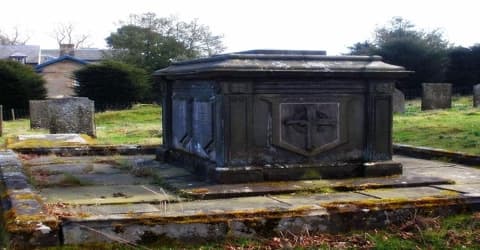
Joseph Paxton died at his home at Rockhills, Sydenham, in 8th June 1865 and was buried on the Chatsworth Estate in St Peter’s Churchyard, Edensor. His wife Sarah remained at their house on the Chatsworth Estate until her death in 1871.
Joseph Paxton built the three most notable glass constructions in England, and the world, during his time. The Great Conservatory, Victoria Regia House, and The Crystal Palace. The residential area near where The Crystal Palace was relocated has been called by the same name, in honor of Joseph Paxton. As well as the actual buildings, Joseph Paxton also cultivated Cavendish bananas, which are the most common and well-known bananas in modern society.
Paxton’s most elegant masterpiece was ‘The Crystal Palace’ for the ‘Great Exhibition’ of 1851. The building was erected in just six months, with 293,655 panes of glass, 330 huge iron columns and 24 miles of gutters.
Information Source:
